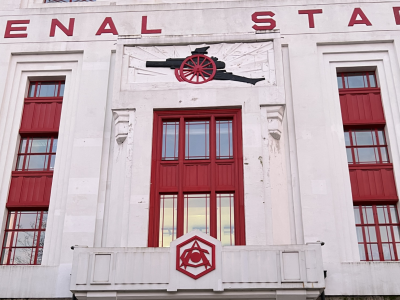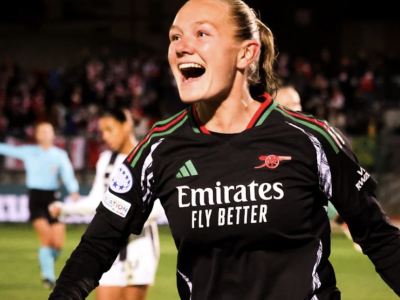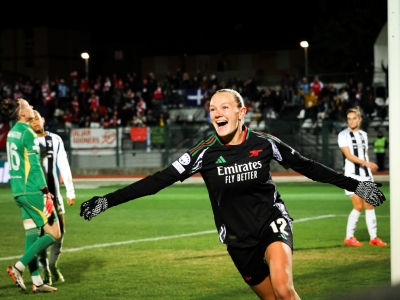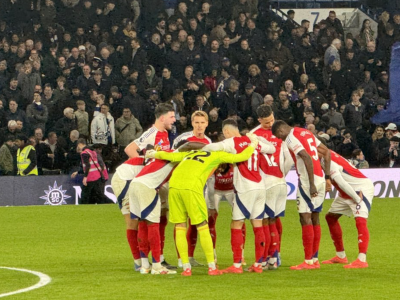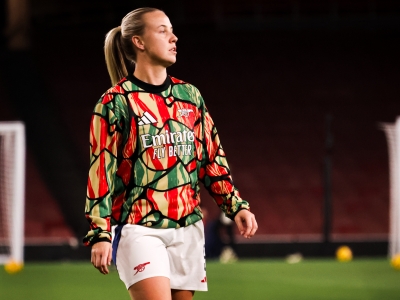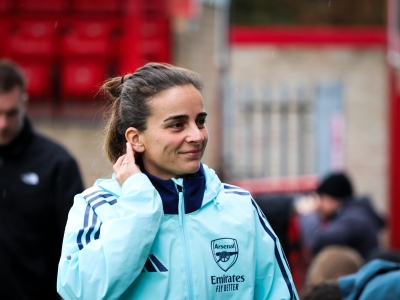The summer of 1968 was one of great upheaval for the world at large. Following on from the assassination of Martin Luther King the previous April, was also the killing of US presidential candidate Robert Kennedy in June, in a manner similar to his brother while he was in office five years prior. At Highbury, no real sign of a revolution was occurring on the surface, though Arsenal’s fortunes were gradually beginning to change. Over the summer, the only transfer activity had been two outgoing transfers. After losing his first team place at the end of the previous season, goalkeeper Jim Furnell transferred to Rotherham with Bob Wilson now firmly in place as Arsenal’s first choice keeper. Also leaving Highbury was Gordon Nielsen on his way to Brentford.
The only incoming move to Highbury over the summer had been the return of Peter Simpson after a summer on loan at the Boston Beacons of the NASL (a new franchise for 1968, which folded at the close of the season). Arsenal’s season started with the regular behind closed doors friendly with Watford at London Colney, in which Arsenal lost 1-2. The Gunners then went on a pre-season tour of West Germany. The first fixture was against Alemmania Aachen, from the Western Rhineland border near France. The previous season the side had completed their first ever season in the Bundesliga. Two goals for David Jenkins was not enough to prevent Arsenal crashing to a 2-3 defeat.
Three days later, the last fixture on Arsenal’s tour of West Germany came against Borussia Monchengladbach. The Gunners played out a 0-0 draw. Seventy two hours on saw Arsenal head to Ibrox on the final Saturday before the start of the season. In front of a crowd of 40,000, goals for David Jenkins and George Johnston meant a 2-2 draw. One place however where revolution was occurring in late summer 1968 was the ITV network. The number of national franchises had been increased from twelve regions to thirteen. There had also been the abolition of the weekend franchises for the North and Midlands. As a result, ATV was granted a seven day licence for the Midlands, as had Granada for the North West.
As a by-product, this meant change for viewers in London. North and Midlands weekend franchise holder ABC Weekend Television was forced into a merger with London weekday provider Associated Rediffusion, to form Thames Television. Meanwhile, ATV’s new commitments in the Midlands meant a vacancy for the weekend franchise in the capital. Into the vacuum came London Weekend Television (LWT), which had been a consortium headed up by broadcaster David Frost with other former BBC figures such as Frank Muir and former BBC1 controller Michael Peacock. Appointed as head of Sport had been Jimmy Hill, who along with former BBC Radio commentator Brian Moore, launched ‘The Big Match’ as London’s regional football highlights show.
The new station was to come on air on 2nd August 1968 and with Arsenal’s fixtures kicking off eight days later with a trip to White Hart Lane to face Spurs, the North London Derby looked the natural choice to kick off London’s new Football highlights show. The fledgling ITV station however was hit by Industrial action in its opening week. Associated Rediffusion’s merger with ABC meant that LWT were forced to take over their old studios in Wembley and employ the same staff. The transmission staff were now required to work weekends rather than weekdays and wanted extra pay for the unsociable hours they were now required to work.
As a result of this, the North London Derby went uncovered by the Big Match, who instead showed a rerun of the 1968 European Cup Final. In the event, a crowd of 56,280 turned out for the Derby game. Arsenal opened the scoring with a goal from John Radford. Into the second half, the Gunners lead doubled with an own goal by Tottenham’s Phil Beale. Jimmy Greaves pulled one back for Spurs, but couldn’t prevent a 2-1 victory for Arsenal. Three days on, Arsenal’s first home game of the season saw the visit of Leicester City. A crowd of 32,164 turned out for Highbury’s first fixture. After a goalless first half, goals for David Court and two for Bobby Gould meant a 3-0 victory which gave Arsenal back to back wins.
Four days later, another box office draw that might well have featured on the Big Match was the visit of Bill Shankly’s Liverpool. Sadly by this point, the whole of the ITV network were now embroiled in industrial action with the ACTT Union, which meant that the whole network were forced into an emergency national ITV service. To add insult to injury, ITV showed a repeat of the 1968 League Cup Final, in which Arsenal lost 0-1 to Leeds United. A crowd of 43,535 turned out for the Liverpool game, paying an admission fee of ten shillings. Arsenal took the lead with a goal from John Radford. Five minutes into the second half, a goal from Roger Hunt equalised for Liverpool. With no further scoring, the game ended in a 1-1 draw.
On the day of Arsenal’s next fixture away at Wolves, the Soviet Union in coalition with fellow Warsaw pact countries Bulgaria, Poland and Hungary, had led an invasion of Czechoslovakia to crush the ‘Prague Spring’ which had been a process of political liberalisation by the Czech regime. At Molineux however, Arsenal and Wolves played out a goalless draw. On the weekend, there followed a trip to East Anglia to face Ipswich Town at Portman Road. Goals for John Radford and David Jenkins earned Arsenal a 2-1 victory, while Ray Crawford was on target for Ipswich. Arsenal’s penultimate fixture of August in midweek was a visit from reigning League champions Man City.
City had won just one of their first four games in defence of their title. A crowd of 40,776 turned out at Highbury for the occasion. Goals for Jon Sammels and John Radford, as well as two for David Jenkins gave Arsenal a 4-1 victory, while Colin Bell was on target for City. The win took Arsenal to the top of the table after six games. On the last day of August 1968, Arsenal faced a visit from QPR. Rangers were newly promoted to the top flight for the first time in their history. QPR’s only previous visit to Highbury had been an FA Cup tie back in January 1922. Rangers were also managed by former Arsenal boss Bill Dodgin and had enjoyed two promotions on the bounce since their 1967 League Cup win.
Nine minutes into the second half, Frank McLintock gave Arsenal the lead. On the hour mark, a Terry Neill penalty doubled Arsenal’s lead. Seven minutes later, Alan Wilks pulled a goal back for Rangers, however could not prevent a 2-1 victory for Arsenal (and the Classic Match report from ‘The Arsenal History’ site informs that the game took place the same day as Garfield Sobers hit six consecutive sixes for Notts against Glamorgan). Arsenal’s first fixture of September 1968 was the beginning of the Gunners second attempt at Wembley glory, with a visit from Sunderland in the League Cup second round. A goal from Terry Neill gave Arsenal a 1-0 win in front of a crowd of 28,460.
The first leg fixture would be a trip to the Dell to meet thirteenth place Southampton. Terry Paine would be on target for the Saints, however two goals for John Radford meant that Arsenal’s winning run continued. Next up would be Stoke City at Highbury. A goal for Terry Neill meant a 1-0 win for Arsenal in front of a crowd of 28,275. Arsenal were still riding high at the top of the table unbeaten, however Don Revie’s Leeds United were also unbeaten and one point behind with a game in hand. On the penultimate Saturday of September, Arsenal’s trip to Elland Road to meet the West Yorkshire side would be the Gunners’ first appearance on Match of the Day for 1968/69.
Goals for Jack Charlton and a superb header from Michael O’Grady however inflicted a 0-2 defeat on Arsenal – their first loss of the season. Consequently, pole position was conceded to Leeds United on goal average. Four days later, Arsenal headed to Glanford Park to face Scunthorpe in the third round of the League Cup. The North Lincolnshire side were sitting in fourteenth place in the old Fourth Division and had a young Kevin Keegan within their squad. That very same night, Scunthorpe old boy Ray Clemence would be making his debut for Liverpool in a League cup tie with Swansea Town. Scunthorpe could have done with a keeper of Clem’s calibre as Arsenal ran out 6-1 winners, with goals from David Court, Bobby Gould, Jon Sammels and a hat-trick for David Jenkins.
The following week would bring Arsenal’s very first appearance on LWT’s ‘The Big Match’ with the visit of tenth place Sunderland. In front of a crowd of 35,277, the match ended in a 0-0 draw, however a 1-3 defeat for Leeds United to league champions Man City meant that Arsenal finished September 1968 at the summit of the old First Division. October 1968 begun with a trip to Old Trafford to meet a Man United side that despite being European Champions were languishing in twelve position after ten games, having already lost four matches. Highlights of the game would again feature on the BBC’s ‘Match of the Day’.
Old Trafford has always been a difficult place for the Gunners to pick up points, even when United have been in poor form and so it was again in 1968/69, as Arsenal left Old Trafford with a 0-0 draw. A 1-0 win for Leeds United away at Newcastle meant that Arsenal lost the top spot to Don Revie’s side. Four days on, Arsenal travelled to Maine Road to face reigning Champions Man City for the second time in three weeks. With John Radford on target for Arsenal and Colin Bell on target for City, the game ended in a 1-1 draw. Another win for Leeds at Sunderland, as well as a 1-1 draw for Liverpool over Everton, meant that Arsenal now dropped to third place.
The following Saturday, saw the visit of second from bottom Coventry City to Highbury. Highlights of the game would be captured by LWT’s ‘The Big Match’. Arsenal got back to winning ways, with a 2-1 victory courtesy of a fantastic volleyed goal by David Court as well as John Radford also on target, while Ernie Hunt would score for Coventry. Three days later, Arsenal faced a stiff test in their quest for a return to Wembley with a visit from Bill Shankly’s Liverpool to Highbury. The Reds were one point above Arsenal in the league table at the time. A crowd of 39,299 turned out for the tie and witnessed Arsenal progressing to the Quarter Finals with a 2-1 victory with goals from John Radford and Peter Simpson, while Chris Lawler would be on target for Liverpool.
On the penultimate Saturday of October 1968, Arsenal journeyed to the Hawthorns to meet ninth place West Brom. A goal for Tony Brown inflicted a 0-1 defeat on Arsenal, which saw the Gunners fall further off the pace, now behind Everton in fourth place. In the meantime, a swap deal occurred with Spurs for Jimmy Robertson that saw David Jenkins heading in the other direction. In a rare piece of business with our rivals from the other end of the Seven Sisters Road, Jenkins made just fourteen appearances for Spurs over four years, before transferring to Brentford. Jimmy Robertson on the other hand made his Arsenal debut on the final Saturday of October, with a visit from West Ham United, highlights of which were captured by the BBC’s ‘Match of the Day’. The game ended in a 0-0 draw.
October 1968’s final fixture would be the League Cup Quarter Final tie at Highbury against second tier Blackpool. An attendance of 32,321 turned out for the tie and were rewarded with a goal fest. On target for the Gunners would be Bobby Gould, John Radford, Peter Simpson and two for George Armstrong, as Arsenal ran out 5-1 winners and progressed to a Semi Final meeting with Spurs. Arsenal were due to face Sheffield Wednesday for the first fixture of November 1968, the game however was postponed. In the meantime, Richard Nixon would be elected as the president of the USA.
One week later, Newcastle United visited Highbury. The game ended goalless and Arsenal’s league form was now just one win in their last eight games. Next up in the league however would visit the City Ground to face Nottingham Forest. In November 1968, the FA took the decision to ban Navy blue shirts, like the away kit which Arsenal wore, on the grounds that they clashed with the referee’s kit. Arsenal therefore for this fixture reverted to a yellow away kit, for the first time since the early 1950s. From hereafter, the yellow second kit would become as iconic as Arsenal’s first colours of red and white.
In the event, goals for George Armstrong and John Radford earned the Gunners a 2-0 victory. Four days on would be the first leg of Arsenal’s League Cup Semi Final tie with Spurs at Highbury. A crowd of 55,237 turned out for the game, paying five shillings for the privilege (the equivalent of 25p in decimal currency. Adjusted for inflation that would be £4.17 in today’s money). A late goal for John Radford meant that Arsenal took a 1-0 lead back to White Hart Lane for the second leg. Arsenal were hoping that back to back victories would build momentum to challenge traditional bogey side – eighth place Chelsea - at Highbury. The game would be covered by LWT’s ‘The Big Match’.
A goal for Peter Houseman however inflicted a 0-1 defeat on the Gunners, which now left them five points behind League leaders Liverpool, but with a game in hand. On the last day of November 1968, Arsenal headed to Turf Moor to play eighth place Burnley. Jimmy Robertson’s first goal for Arsenal earned the Gunners a 1-0 win. Arsenal finished November 1967 in fourth place. The first fixture of December 1967 would be a trip to White Hart Lane to face Spurs in the second leg of the League Cup Semi Final. A crowd of 55,923 headed to White Hart Lane for the tie. Midway through the first half, a Jimmy Greaves goal levelled the scores on aggregate.


